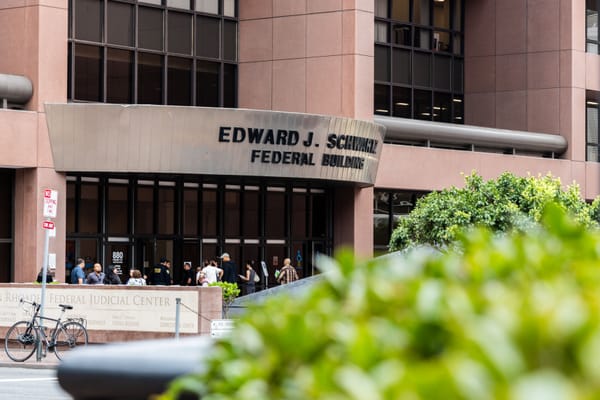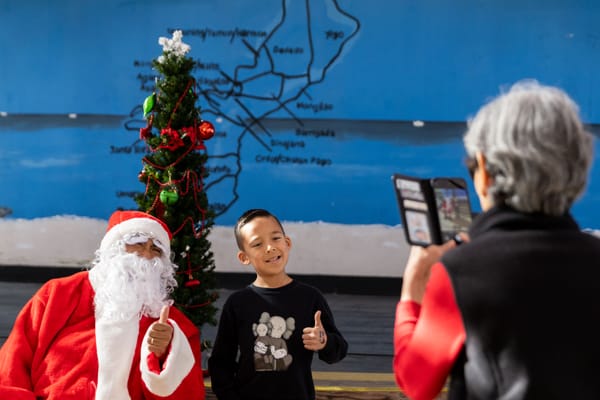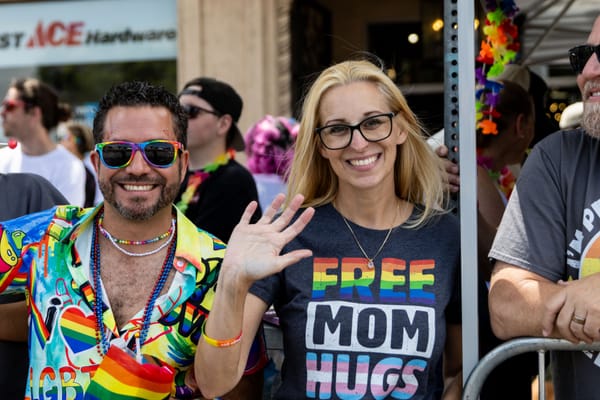Diverse vets, STAT: Chula Vista teens explore animal medicine
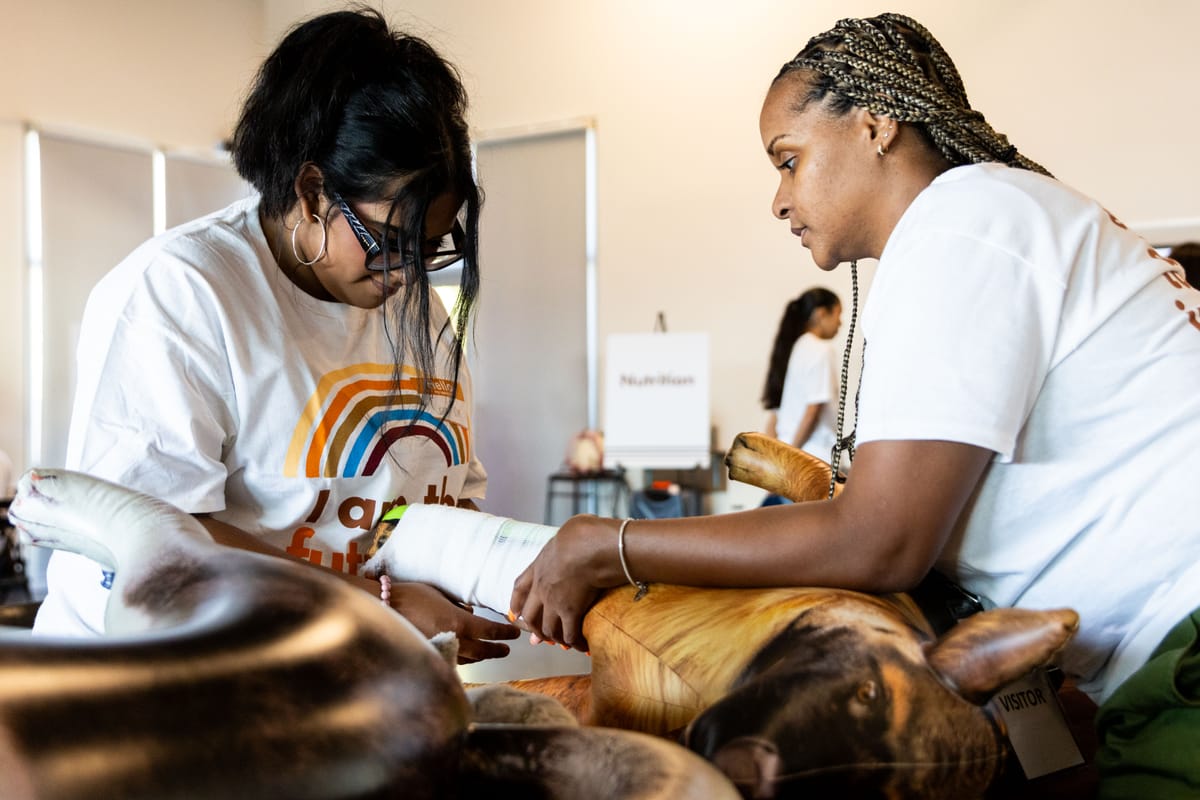
At High Tech High, students learned how to set casts, stitch sutures and investigate bones as part of an effort to increase diversity in veterinary medicine.
Written by Lauren J. Mapp, Edited by Maya Srikrishnan
A packed room at High Tech High in Chula Vista buzzed with excited voices last Friday as middle and high school students rotated through stations to gain hands-on veterinary experience.
At one table, students pulled on face masks, blue gowns, head covers and gloves before stitching sutures onto silicone practice pads.
Other stations challenged students to affix metal plates and screws to broken bone samples, clip the nails of guinea pigs and a chihuahua, perform CPR on dummies and practice administering vaccines.
High Tech High freshman Valentina Castro, who hopes to become a veterinarian, joined the workshop to deepen her knowledge of the field. With three cats and a dog at home, Valentina said she was especially interested in getting to know more about their care, including how to test feces for canine parvovirus, a highly contagious disease that can cause dogs to vomit, lose their appetite and be lethargic.
“The most interesting thing about it is they can carry so many diseases [in their feces], and learning about how [diseases] can get in was pretty cool,” the 14-year-old said.
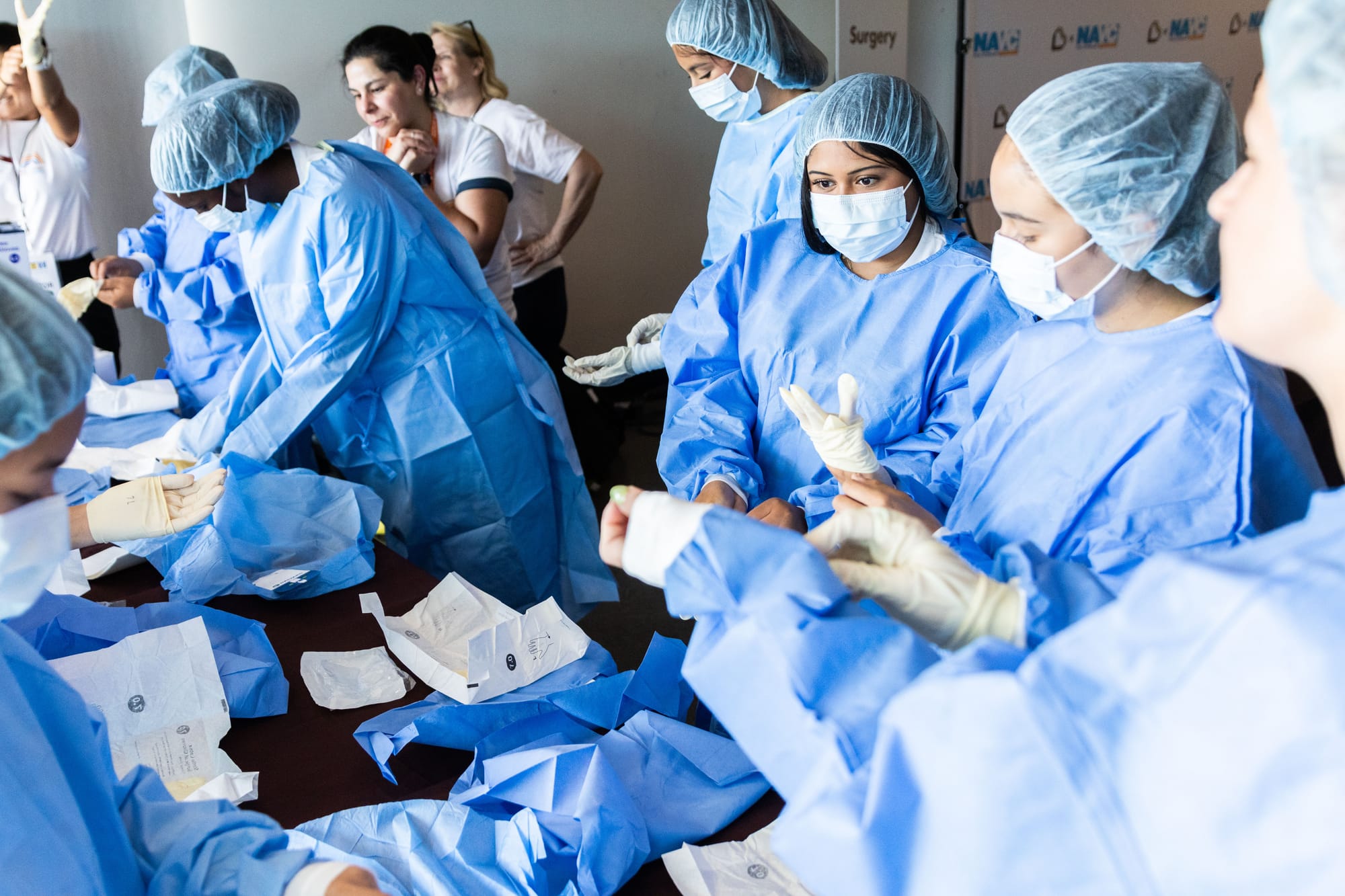
Veterinarian Niccole Bruno, blendVET founder and CEO, led the event as part of the organization’s ongoing effort to increase diversity in veterinary medicine.
Veterinary medicine is the least racially diverse medical profession, according to the Bureau of Labor Statistics, with more than 90% of veterinarians identifying as White.
Admission to veterinary colleges remains highly competitive, Bruno said, requiring applicants to log anywhere between 1,500 and 2,000 hours in animal health settings as interns, volunteers or students.
“Many times those experience hours are unpaid,” she said. “If you have a child that needs to help their family and the socioeconomic barriers are there, it's not something that they can volunteer their time for. They have to make an income.”
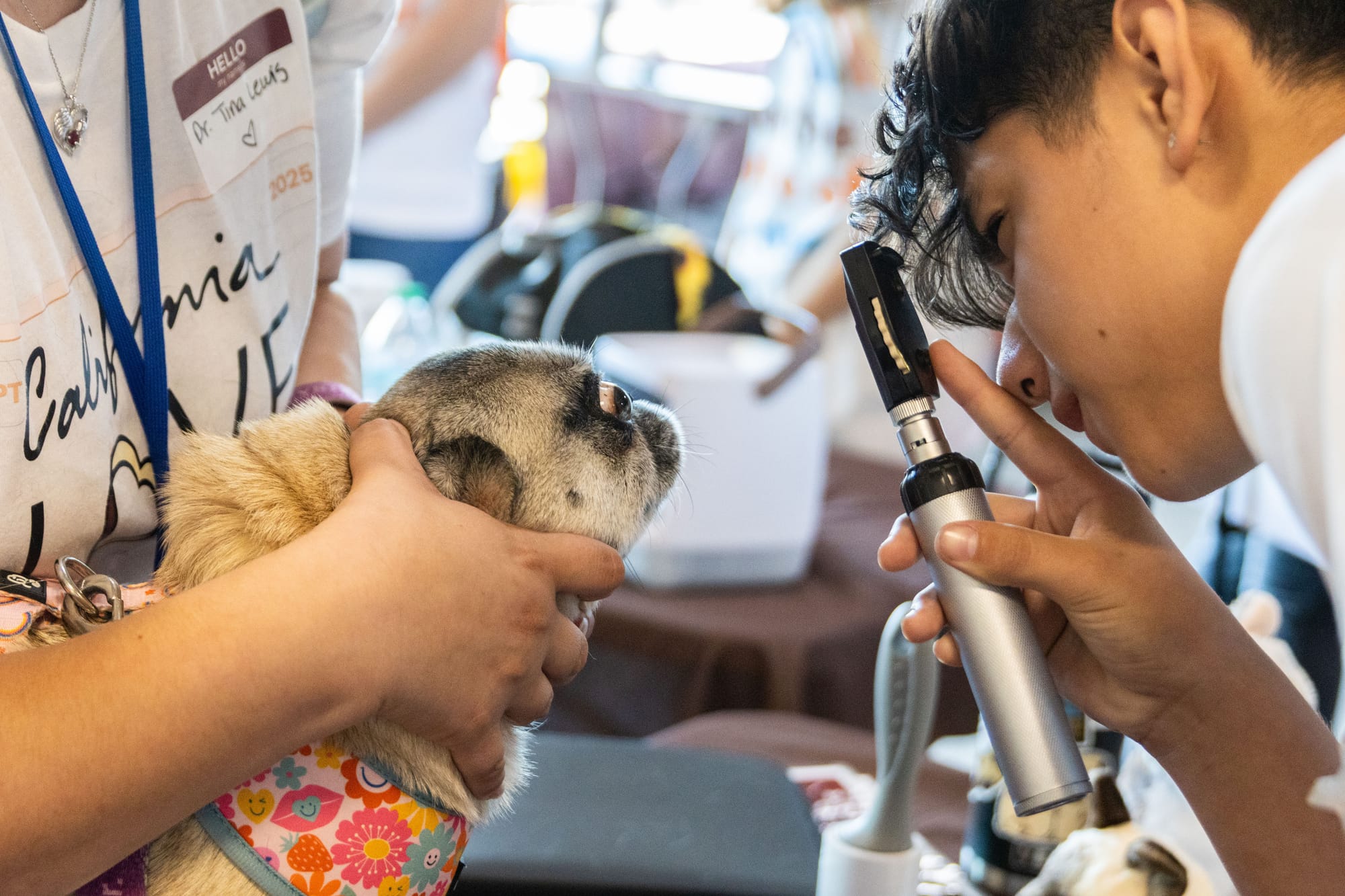
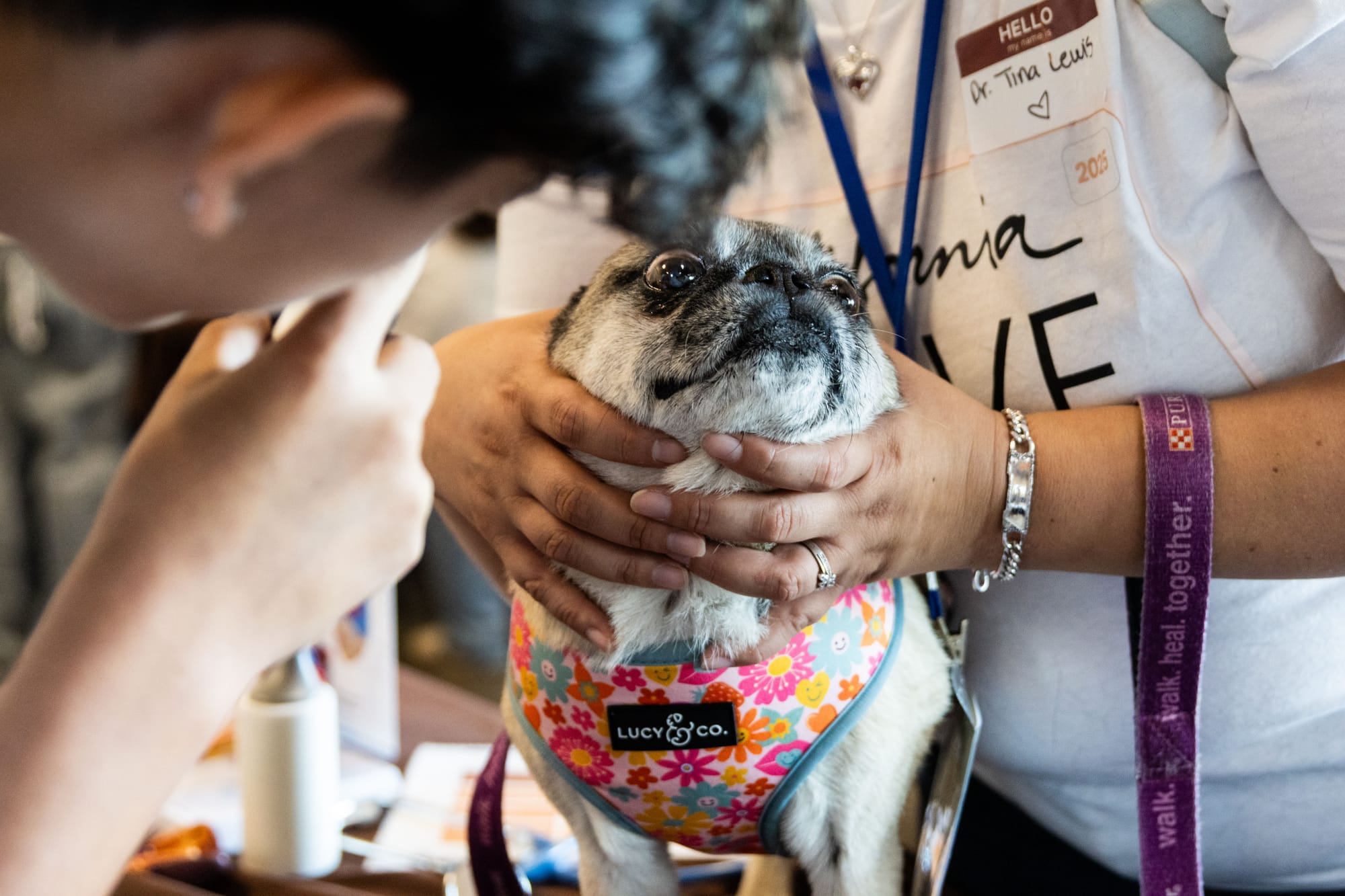
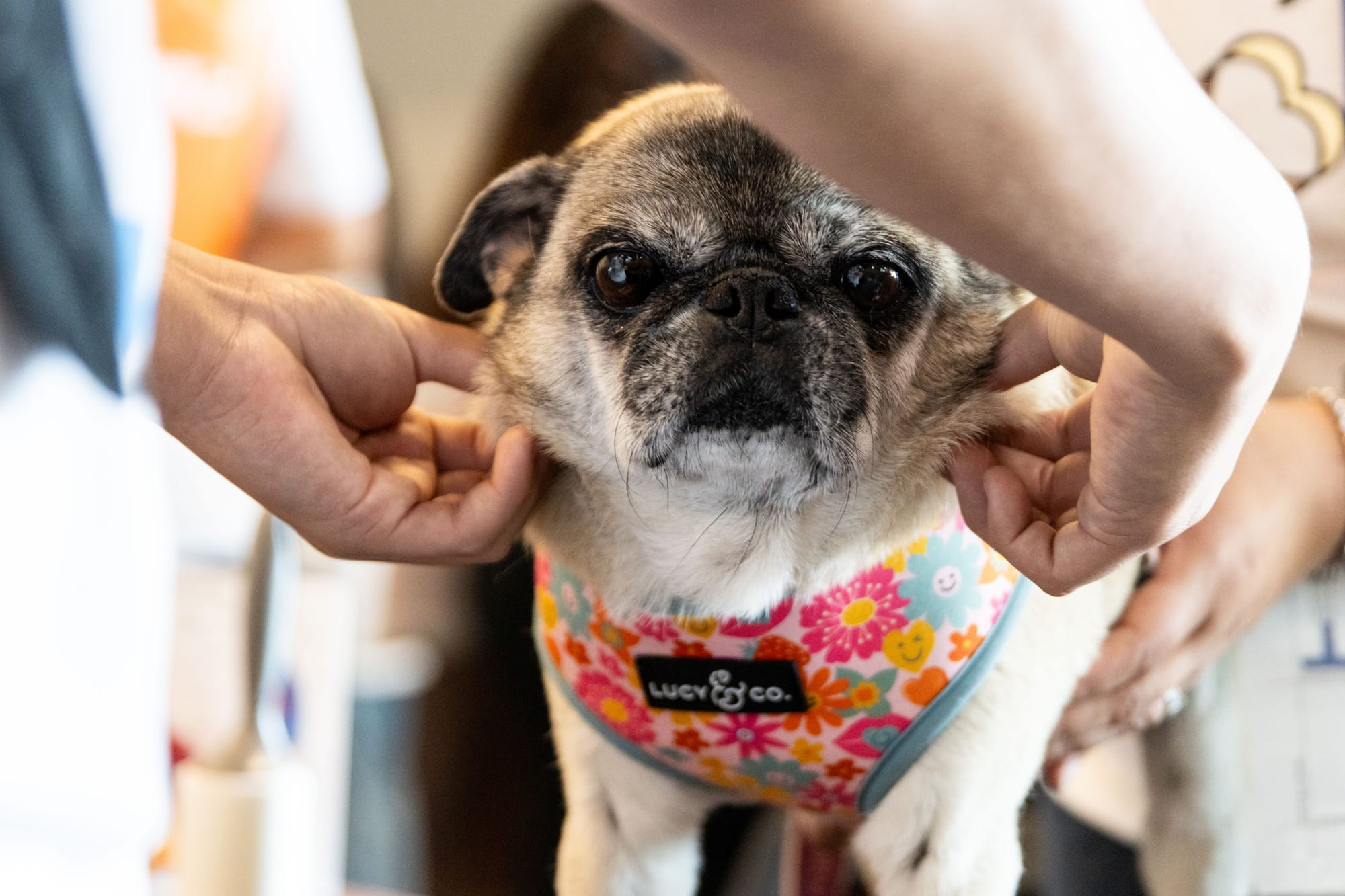
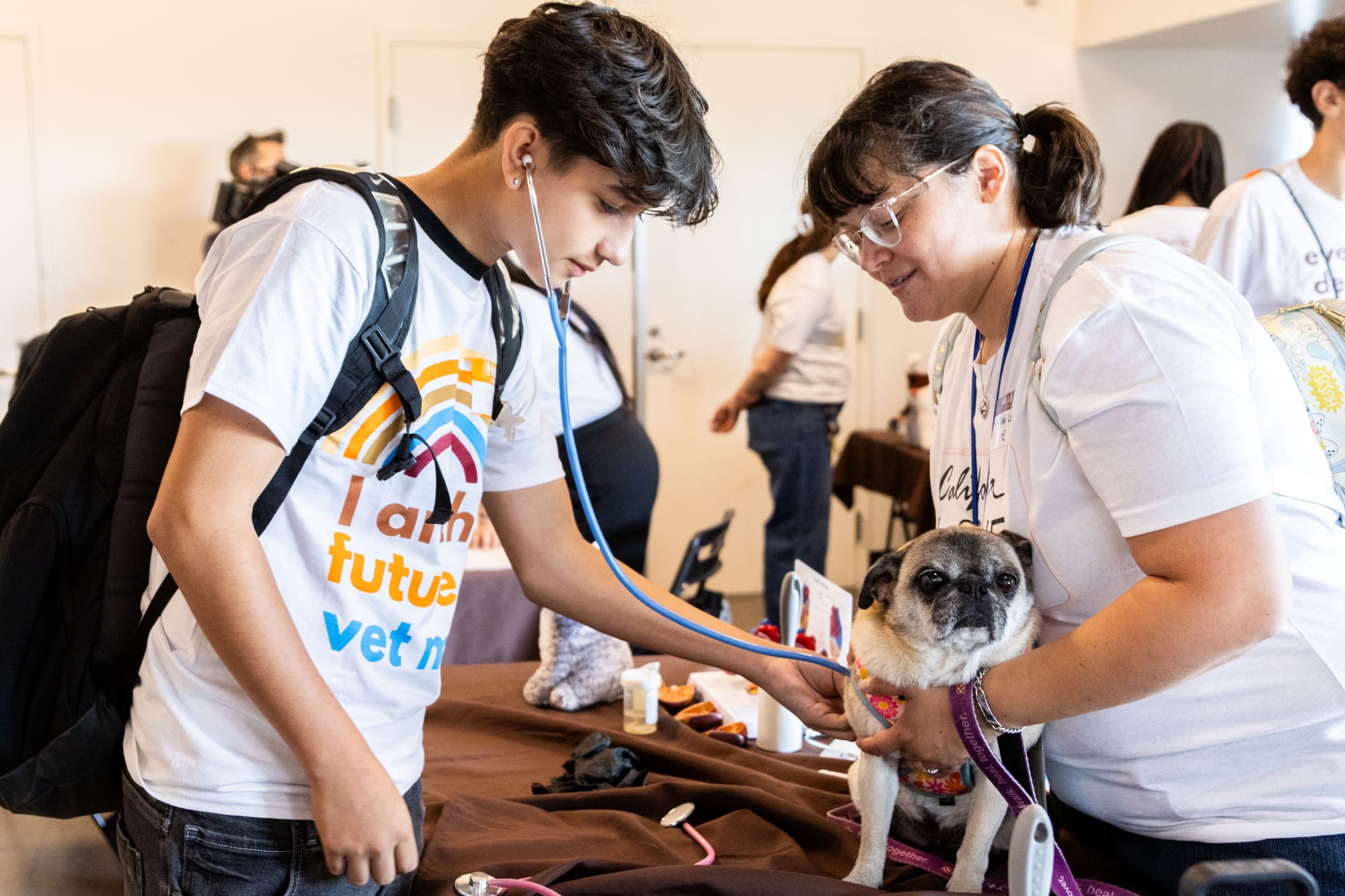
A High Tech High student checks pug’s retinas lymph nodes and heartbeat at the general exam station where students learn how to administer basic exams on pets. Brittany Cruz-Fejeran/Daylight San Diego
By providing all-day workshops at schools like High Tech High — where the student body is 73% Hispanic and 10% Asian, according to U.S. News — Bruno said students from diverse backgrounds can earn experience while exploring whether veterinarian medicine is right for them.
The organization also hosts in-person and virtual presentations for parents to help them better support their kids’ aspirations. These sessions cover tuition costs, the importance of hands-on experience and common academic pathways, such as earning a bachelor’s degree in a science field before applying to the veterinarian programs. Parents also receive guidance on what students can do in middle school, high school and college to improve their chances of acceptance.
“There's also many more resources that are out there now because of technology for students to get just more information and learn about veterinary colleges,” Bruno said.

Throughout the program, veterinarians and vet staff introduced students to various specialties, including through veterinary forensic medicine.
Bruno’s younger sister, Veterinarian Jasmine Bruno — a forensic veterinarian for a national animal welfare organization in New York — volunteered at the workshop. She demonstrated how to test blood samples and analyze bones, both key skills for uncovering animal abuse.
“Really it is anything that any veterinarian can do, I just do it every day as part of my job,” she said. “General practitioners may come across an animal cruelty case…so it’s really good to know what to do, how to document the case along and know the process behind it to communicate with the lawyers and the detectives.”

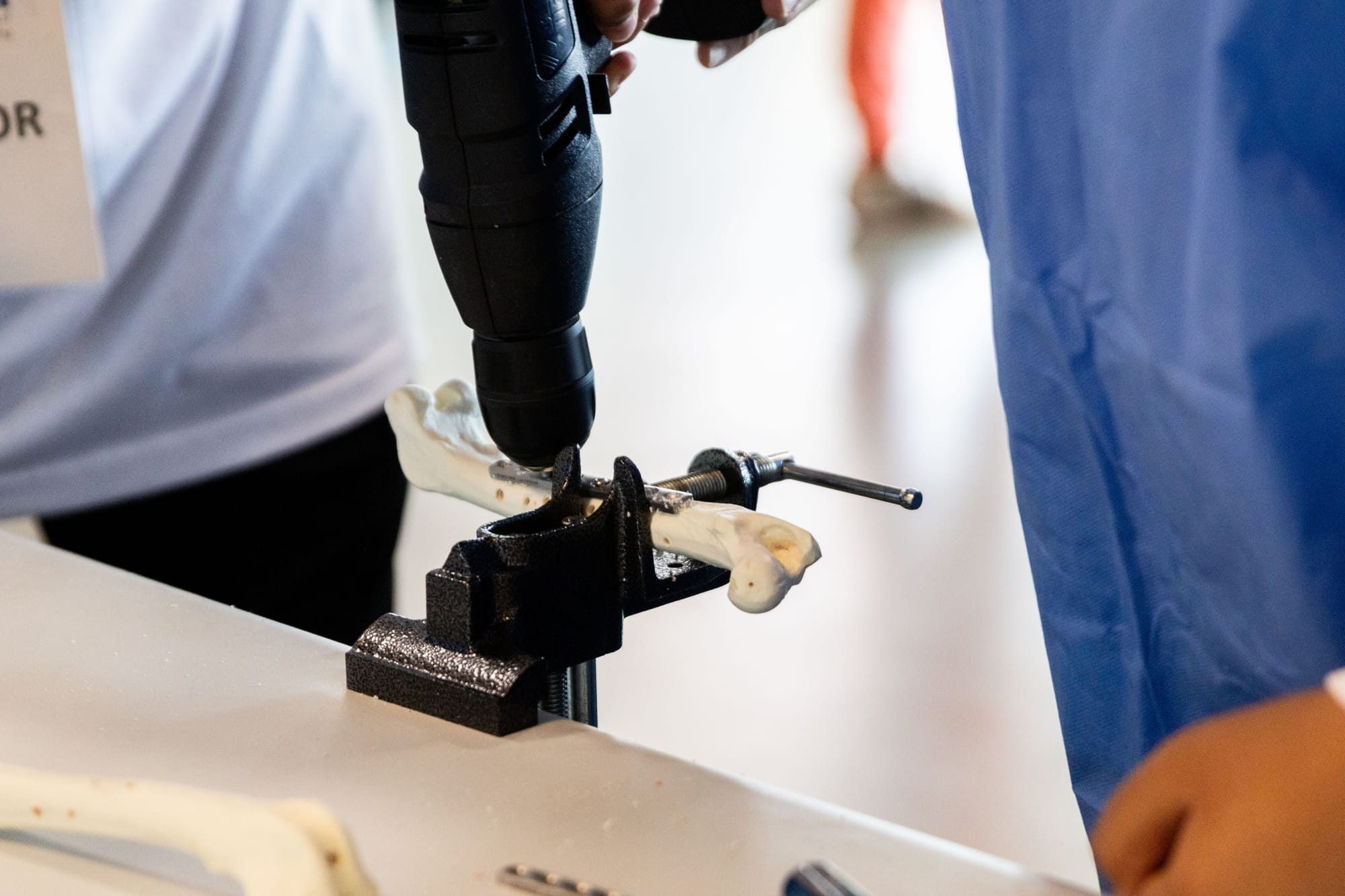
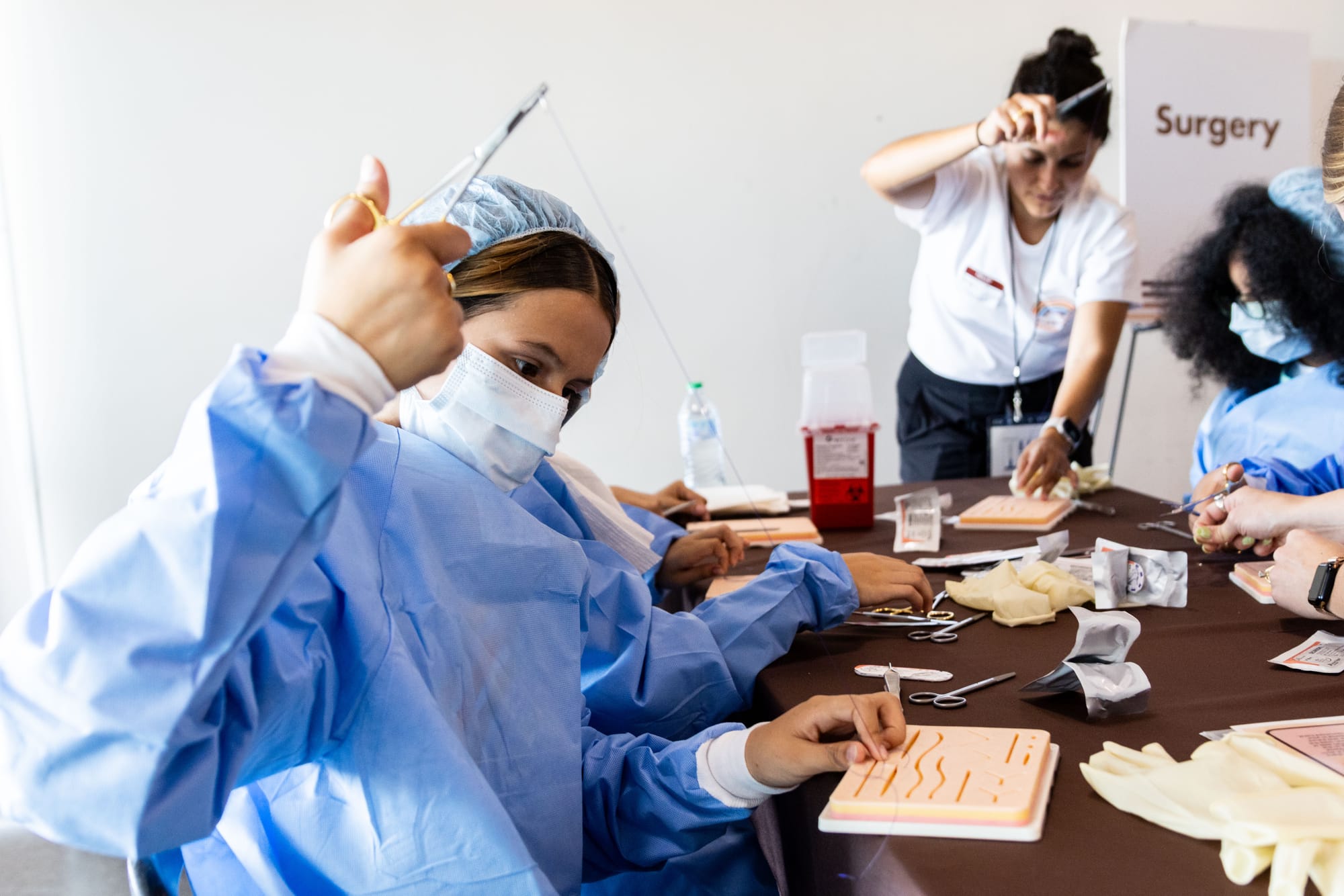
High Tech High students are taught how to stitch sutures and perform an open reduction internal fixation, a procedure that uses a metal plate and screws to fix broken bones. Brittany Cruz-Fejeran/Daylight San Diego
While many of the students attended the veterinarian workshop for the first time, team captains had participated at another school last year.
High Tech High senior Camilo Perez, 16, said the program reinforced his passion for the field, and motivated him to continue pursuing veterinary school.
“I wanted to talk to the doctors and make new connections with people,” he said. “Since I was little, I really wanted to study something related to animals, and now that I had the opportunity to attend this event, I think this is now my first option.”
Updated on Sept. 23, 2025 at 10:16 a.m. to clarify that Jasmine Bruno, Brittany Carter, Niccole Bruno and Mariana Pardo are accredited veterinarians.


